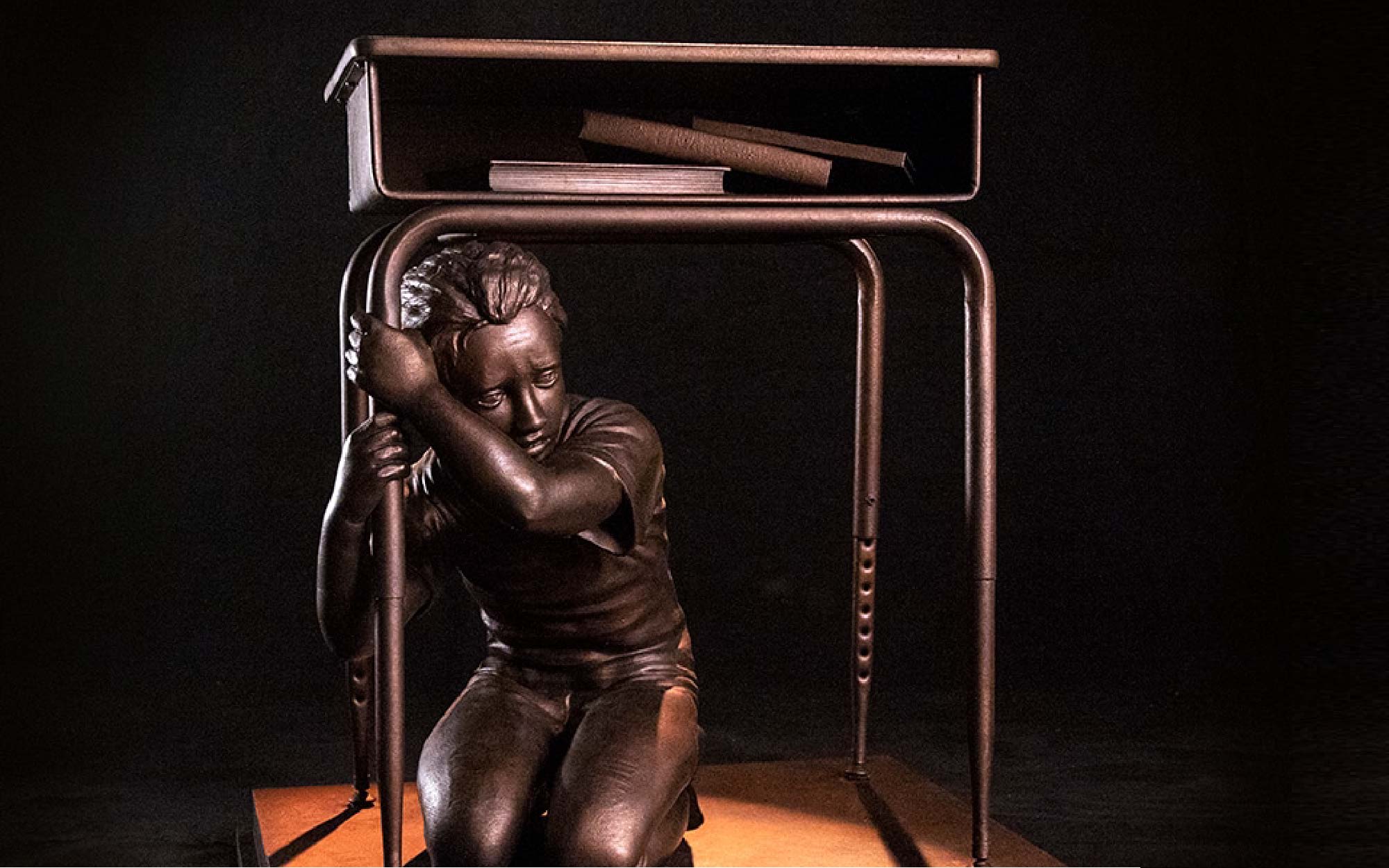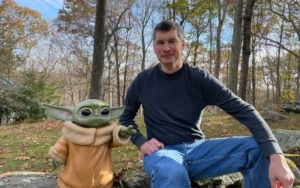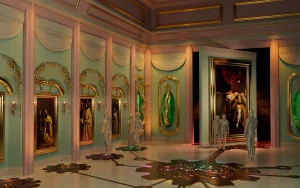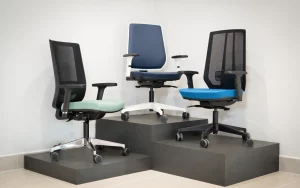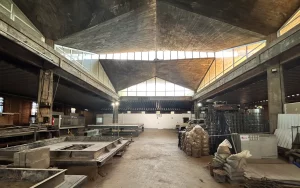It’s a disturbing sight. The desk is scratched with graffiti, and a terrified-looking figure cowers underneath – a small girl – with fingers wrapped around one leg of the desk.
The haunting scene is only a statue, but the fear conveyed on the young girl’s face is real. The statistics etched into the surface of the desk say it all: “During the 2017-2018 school year, the US averaged more than one school shooting per week.” “Guns are the third leading cause of death for American children.” “22 kids are shot every day in America.” They go on.
Sean Leonard and a collaborator are the creative duo behind the jarring sculpture. Both senior creatives in the ad industry in Austin, Texas, the two were spurred on by the tragic school shooting in Parkland, Florida to put their advertising skills to work for a good cause.
“We were inspired by the youth who were taking charge and making their voices heard,” recounts one artist. “They were – and still are – desperate for the issue to remain top of mind. Unfortunately, we knew the issue of gun violence against kids and students would fade from the news cycle after a while until it happened again. This project is our way of drawing – and keeping – attention on the issue.”
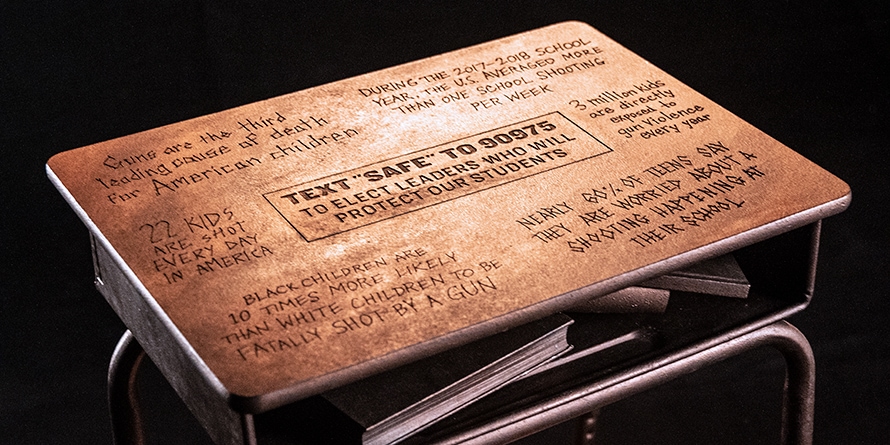
The piece is in fact more than just one statue: it’s ten, scattered across the country on their September 15th reveal in cities from Irvine to Parkland.
The statues were strategically placed in districts “represented by members of Congress who receive a significant amount of money from the gun lobby,” explains the artist. The timing is no coincidence: it’s back-to-school season and midterm elections will be taking place in just a few weeks.
“We know the gun issue is a sensitive one with strong opinions on both sides and that one stunt or installation won’t solve all our problems,” says the design team, “but we want to engage both sides.”
The idea for the piece came about because they wanted to bring attention to an ugly truth that many prefer not to think or talk about.
“Even for parents, it’s difficult to imagine the drills their sons and daughters are being taught in school,” one of the artists says. “So we wanted people to not just conceptualize it, but really see it and feel it.” The drills alone can be a taxing experience for kids, and, as he puts it, “it’s important for that emotion to be relayed to adults.”
They settled on a sculpture for its interactive nature as well as its realism. “A three-dimensional statue forces you to stop and look at it. It’s tactile – you can go up to it and study it, touch it, interact with it,” says the artistic team.
“Another reason we thought this statue was interesting is because it flips what a traditional statue represents,” he says. “Most statues are celebratory or honorary. This captures a moment that should make you uneasy and your stomach a little unsettled. We wanted that emotive reaction.”
Design & Fabrication of the Statues
With the idea born, the pair began making moves to bring the project to fruition.
“After we came up with the idea, we brought on colleagues who could help us bring it to life,” the artist recounts. Caleb Sawyer was their go-to 3D modeler, and with a CAD sculpture in hand, they began pitching the idea to organizations within the national gun reform movement.
They immediately got a positive response from Manuel Oliver, whose organization Change the Ref works to raise awareness about mass shootings and reduce the influence of the NRA on the Federal level. Oliver’s son was one of the 17 murdered in Parkland.
The pitch also piqued the interest of Giffords, a prominent gun reform organization started by Gabrielle Giffords, the US Representative from Arizona who survived being shot in the head in an assassination attempt as she met with constituents.
The two uniquely-impacted individuals came together to lend their own touch to the project. “Mr. Oliver collaborated with us to refine the design of the statue and led the push to make it a guerrilla-style national launch, and Giffords funded the project and is bringing it to life,” explains the designers.
The actual creation of the statues posed its own set of challenges.
“Our first thought was to do a bronze casting,” says the team. But they quickly discovered that process would be both cost- and time-prohibitive. They looked into other materials, like foam. “What it came down to, ultimately, was what gave us the most realism and what was most cost-effective,” he recounts. “3D printing pretty quickly became the obvious choice.”
They decided on a multimedia approach: they would 3D print the girl and use a real school desk, both finished with a post-processing technique to lend a bronze-casted look to the piece
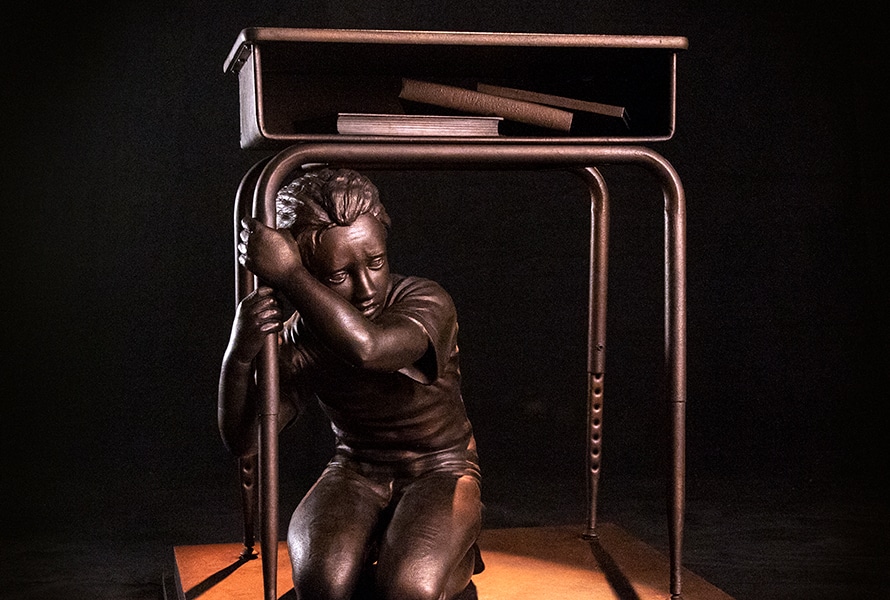
The perk of using Gigabot for the project is that the girls could be printed all in one go, with no need to affix different sections post-printing. At a height of about two feet, they fit easily within the build volume of the Gigabot XLT. The ten girls were printed in our Houston office and sent to PBE Exhibits where Adam Fontenault handled the post-processing.
“Our main goal throughout this part of the process was realism, from the size of the statue to the look on her face,” the design team says. “We even wanted the faux bronzing to look as realistic as possible. Adam lightly sanded the printed statues and primed them to smooth out any visible print lines. He used a mixture of materials to achieve the lightly-patinated bronze look.”
The result is a statue that looks casted, at a fraction of the price and time it would have taken to go through that process.
“We’re thrilled with the final outcome,” says the team. “She looks very lifelike, and the detail on the print is amazing. The bronze paint brings out additional features and makes the whole statue really pop.”
Prompting Policy Change and Conversation
The installation has gotten some major press following its September debut, making headlines in Adweek, The Washington Post, and CNN, among others. It’s a big step for visibility of the project, whose intent is severalfold.
“The first is to raise awareness of how pervasive the issue of gun violence against children really is and to force people to confront it,” the designers explain. “The second goal is to show how art as activism can be a vehicle for positive change. And the third goal is to educate people and motivate them to demand change.”
It’s a hot-button topic with many complicated layers, but Crumrine and Leonard hope that the installation can break through partisan arguments to the ultimate message: keeping kids in school safe from gun violence.
“Inevitably, this issue is loaded with political baggage,” says the artists. “But we’re hoping this project can at least focus the conversation around how to keep our nation’s children from being innocent victims.”
The idea is to spark policy change as much as it is to spark conversation.
“We hope we get strong reactions from both sides. We want it to be uncomfortable to see because it’s an uncomfortable thing to talk about,” the artists explains. “There will always be people who viscerally accept its message or viscerally reject it. But we want the people in the middle to consider what it’s actually saying.”
And as for the name of the cross-country installation?
“The title of the piece is ‘The Last Lockdown,’ because that’s the ultimate dream outcome,” explains the artists. “We want to help create a world where we’ve already seen the last one, but we’re not naïve enough to think it’ll happen overnight. This is hopefully a step in that direction.”
The Last Lockdown statues can be seen in the following ten cities:
Irvine, California
Parkland, Florida
Sarasota, Florida
Philadelphia, Pennsylvania
Houston, Texas
St. Paul, Minnesota
Las Vegas, Nevada
Denver, Colorado
Milwaukee, Wisconsin
Spokane, Washington
Morgan Hamel
Blog Post Author
